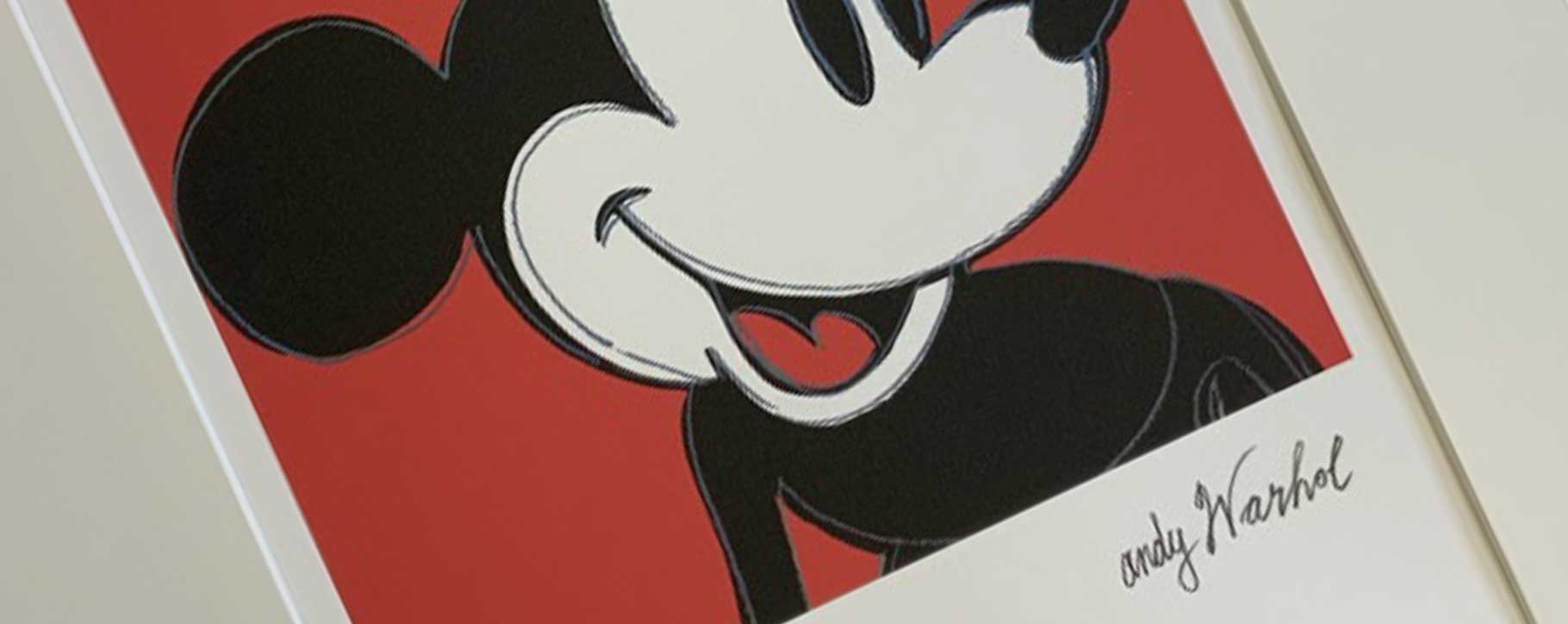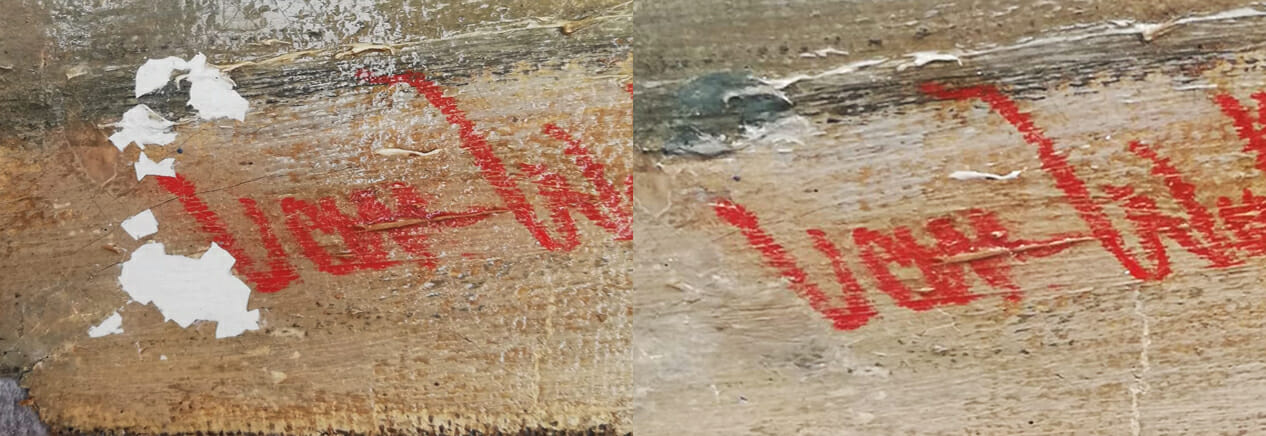
Signatures are an important connection between the artwork and artist, the same can be said about autographs connecting a collectable piece to an influential person. However, signature restoration is not common for ethical reasons, as the authenticity often relies on it being touched only by the hand which originally signed it.
To fully retouch or fill an autograph may decrease the importance of this aspect through obscured association; it is not a task a trained conservator would typically perform for reasons of historical integrity. Therefore, the preservation of such a detail is key, to prevent issues from occurring or worsening over time.
There are various methods available to help preserve autographs, including protection from fading with the use of UV protective glass and the control of temperature and humidity. Restoration treatments can also be performed on the rest of the artwork to ensure that the entire piece is in good condition for appropriate display, sale or storage. Our specialist framing team can also provide sensitive options which take into account the vulnerabilities of the artwork and the autographs or signature it carries.

Protecting autographs on paper
Autographs from celebrities or influential figures are often signed at the spur of the moment, or without much thought given towards the type of ink which is used. This variation in the ink may see some deteriorating at a faster rate than others, but over time this sort of medium is prone to complete fading due to UV rays. Once a signature is faded, it can only be preserved in this condition and not reinstated.
Protecting autographs from fading is extremely important to avoid devastating loss. This can be achieved by using UV protective options in the glass of a frame and window film. UV protective glass can provide 70%-99% protection against sunshine, however, it is still recommended to keep such artworks out of direct light to increase these protective measures.
Depending on the residue from their ink, autographs may adhere to the glass, therefore providing an appropriate mount is key when it comes to framing. This keeps the artwork away from the glass, avoiding any areas sticking to the surface and creating severe damage.

Our specialist team provides protective framing options which take the preservation of autographs into full consideration. As we aim for the conservation of artwork, our team uses acid-free materials in the mount board and surround to ensure that no deterioration or discolouration will occur. We can also add special features, such as windows for the signed areas in the mount, as well as plaques to commemorate the history of the piece.
Older frames, or those unsuitable for conservation, may have acidic elements which decay a work on paper. This can be rectified by our specialist conservator who can gently clean away any toxic particles before it is placed in an appropriate frame with conservation techniques. Acidic elements may promote deterioration in the autographed areas, therefore it is important to remove a piece from any dangerous surroundings as soon as possible.
Paper is also susceptible to mould and foxing which could obscure or accelerate the decay of an artwork, including the signed areas. It is important to keep the piece in a controlled environment where possible, including a place of relative humidity (around 40%) and medium temperature (around 20 degrees celsius).

Revealing and preserving painting signatures
During the restoration process, our team can reveal signatures more clearly on a painting, this is often because they were obscured behind discolouration in the varnish layer. Signatures can also be found hiding under areas hidden behind a frame for many years, or in the clearing of any over-painting which may have hidden this important aspect.
However, when a signature is unveiled or made clearer through the restoration process, our trained conservators cannot retouch it to make it stand out any further. To go over the signature, or to add a signature to the work, would devalue the piece and harm its historical provenance. The named artist is an important factor during sales and any evidence of tampering may result in questions of forgery. Therefore, our team works only towards the preservation of the signature once it is clearly unveiled and not the practice of editing it.

Oil paintings will have their safety ensured following restoration, as our team will remove any toxic elements which may have been on the surface and give the work a new coat of UV protective varnish, which is non-yellowing, unlike the traditional varieties. This should help to preserve the piece with the signature as clear as it can possibly be. However, if issues of mould, accidental damage or household disasters face the painting in the future, this may be put in jeopardy again. The best course of action is to always bring the painting back to our conservation team if you have any concerns about its safety, the faster this happens will allow for the best outcome and decreased levels of damage.

If the signature was hidden beneath a frame in the past, our team can help in either providing a new framing option or the addition of a plaque that details the artist’s name. In future sales, it may be helpful to have the connection to the named artist as clear and visible as possible to increase value and remove any doubt of the origins.
If you have a signature that is fading or obscured, please contact our team to arrange an assessment by one of our trained autographed memorabilia conservators. You can get in touch via email at [email protected] or telephone 0207 112 7576






